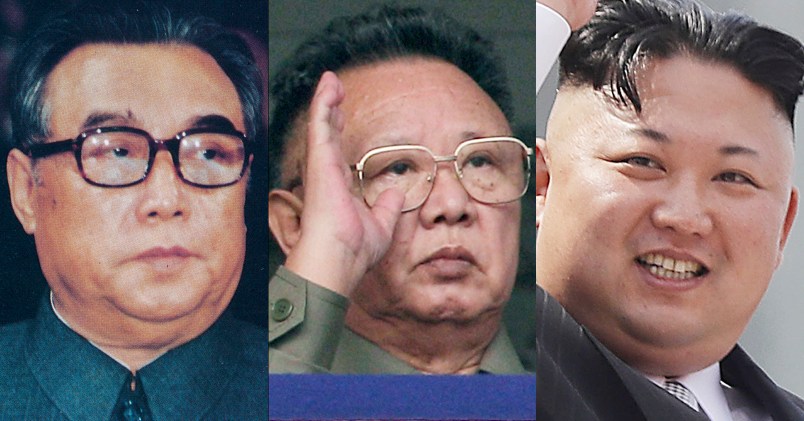SEOUL, South Korea (AP) — After his country’s first test-firing of an intercontinental ballistic missile last week, North Korea’s young leader, Kim Jong Un, has moved one step closer to perfecting a nuclear missile capable of reaching the United States, a weapons program launched by his grandfather and nurtured by his father.
For nearly 70 years, the three generations of the Kim family have run North Korea with an absolute rule that tolerates no dissent. They have devoted much of the country’s scarce resources to its military but have constantly feared Washington is intent on destroying their dynastic rule. They concluded that a powerful nuclear deterrent against potential U.S. aggression would guarantee their survival.
A look at how North Korea’s nuclear and missile programs have evolved under each of the three Kims.
___
THE PATRIARCH: KIM IL SUNG (1948-1994)
1948: Kim Il Sung, a former guerrilla leader fighting against Japan’s colonial rule, establishes the Democratic People’s Republic of Korea in the northern half of the Korean Peninsula.
1950: Kim’s army invades South Korea, triggering the three-year Korean War. The United States fights alongside South Korea while China backs North Korea.
1985: North Korea joins the Nuclear Nonproliferation Treaty. But the country doesn’t allow inspections required by the pact, arousing suspicions that it’s engaging in clandestine work to develop atomic weapons.
1993: North Korea announces its withdrawal from the Nuclear Nonproliferation Treaty, touching off an international nuclear crisis.
July 1994: Kim Il Sung dies of a heart attack at age 82. His son and longtime heir apparent, Kim Jong Il, takes power.
___
THE SON: KIM JONG IL (1994-2011)
October 1994: North Korea and the United States sign a landmark nuclear disarmament deal in Geneva. North Korea pledges to freeze and eventually dismantle its nuclear weapons program in exchange for international aid to build two power-producing nuclear reactors.
1998: North Korea stuns the region by firing a suspected missile over Japan and into the Pacific Ocean.
2002: Assistant U.S. Secretary of State James Kelly says North Korean officials admitted to having a secret nuclear weapons program during his visit to Pyongyang. The 1994 pact subsequently falls apart and a nuclear crisis flares again.
2003: North Korea attends Beijing-hosted disarmament talks that also involve Washington, Seoul, Tokyo and Moscow. The on-and-off talks continue until late 2008, producing two major now-stalled disarmament-for-aid deals.
July 2006: North Korea launches a three-stage rocket with a potential range of 6,700 kilometers (4,100 miles) but it fizzles after liftoff, according to U.S. and South Korean officials. North Korea has never acknowledged the launch.
October 2006: North Korea conducts its first underground nuclear test blast, citing “extreme threat of a nuclear war” from the United States.
2009: North Korea conducts its second nuclear test explosion.
2011: Kim Jong Il dies of a heart attack at 69. Kim’s youngest son, Kim Jong Un, succeeds him as leader.
___
THE GRANDSON: KIM JONG UN (2011-present)
2012: North Korea puts a satellite in orbit with a long-range rocket. The United States, South Korea and others condemn the launch as a cover for testing long-range missile technology. It is the North’s first successful satellite launch.
2013: North Korea carries out its third nuclear test.
January 2016: North Korea says it has conducted a hydrogen bomb test. It’s the North’s fourth nuclear test, but many outsiders are skeptical that it was a hydrogen bomb explosion.
February 2016: North Korea succeeds in its second satellite launch.
August 2016: North Korea fires a ballistic missile from a submarine that flies 500 kilometers (310 miles) before crashing into waters near Japan. Missiles launched from submarines are generally harder to detect than land-based ones.
September 2016: North Korea stages its fifth nuclear test, its most powerful atomic bomb explosion to date.
February 2017: North Korea tests a new midrange ballistic missile, the Pukguksong-2. It says the missile used solid fuel, an advance that increases a weapon’s mobility and makes it harder for outsiders to detect a coming launch. The North tests this missile again in May.
July 4, 2017: North Korea test-fires its first ICBM at an extremely lofted angle. The missile, called Hwasong-14, is capable of reaching Alaska and beyond if launched at a normal trajectory, according to outside experts. After the launch, Kim says he won’t put his weapons programs on the negotiating table unless the United States ends its hostility and nuclear threat.






